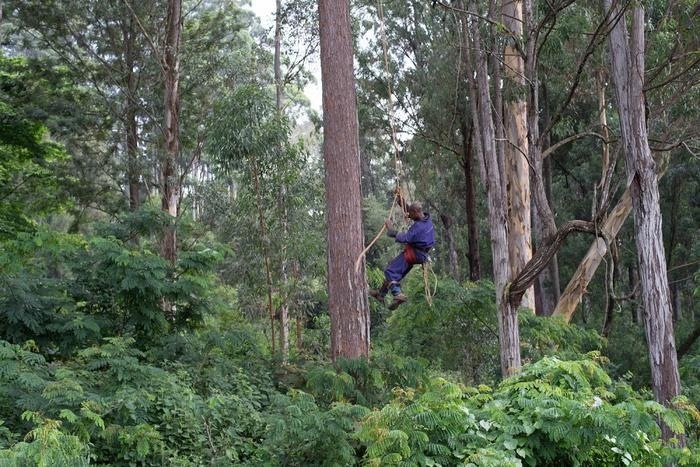CABI collaborated with a global team of researchers from 57 institutions to lend its expertise in a landmark study emphasizing the pressing need to safeguard the world’s forests from non-native pests in light of climate change.
 The ground-breaking study which sheds light on the potential impacts of non-native pests and climate change on global forest health. Image Credit: René Eschen, CABI
The ground-breaking study which sheds light on the potential impacts of non-native pests and climate change on global forest health. Image Credit: René Eschen, CABI
The research was guided by Dr. Iva Franić, who, at the time of the study, was a Ph.D. Student co-supervised by CABI’s Dr. René Eschen, emphasizes the urgent need to reduce tree pests and improve the adaptability of forest ecosystems in the face of rising temperatures.
The researchers, including CABI’s Dr. Marc Kenis and Dr, Hongmei Li, argue that by understanding the complicated relationships between climate, host species, and geography, stakeholders can create measures to safeguard the world’s forests and the extremely valuable benefits they provide. The study was published in the journal Scientific Reports.
An extensive survey of insects and fungi linked with dormant twigs of 155 tree species was conducted at 51 botanical gardens or arboreta in 32 countries spanning six continents. The researchers assessed the importance of different factors in influencing differences in tree-associated communities.
The findings revealed that the primary drivers of dissimilarities were mean annual temperature, phylogenetic distance between hosts, and geographic distance between locations.
The growing importance of high temperatures on the differences observed in the studied communities was of great concern, implying that climate change could directly and indirectly affect tree-associated organisms through shifts in host ranges.
The researchers also discovered that when linked with closely related host species, insect and fungal communities displayed greater similarity, indicating that host range shifts may enable the emergence of new pests.
Furthermore, differences among communities with trees increased with distance, suggesting that human-mediated transport may make it easier to introduce new pests into forests.
The study’s findings demonstrated that climatic factors played a crucial role in shaping the composition of fungi, particularly saprotrophic and plant pathogenic fungi, as well as herbivorous insects associated with trees. Moreover, the study highlighted the importance of host-related factors, such as phylogenetic distance and wood density, in shaping these communities. Closely related host species were found to share more species of insects and fungi, suggesting a co-evolutionary relationship.
Dr. Iva Franić, Swiss Federal Institute for Forest, Snow and Landscape Research WSL
The researchers contend that geographic factors were also important, with distance between locations emerging as a key factor in driving diversity. Both plant pathogenic fungi and herbivorous insects had distinct geographic structures within continents, according to the study, indicating limited geographic dispersal. However, the exchange of plant material between continents might result in the introduction of new pathogens and pests.
The findings of this study provide valuable insights into the complex dynamics of tree-associated communities and emphasize the importance of proactive measures to safeguard forest health in the face of environmental challenges. As climate change and global trade continue to shape our world, understanding and predicting these changes will be crucial for the long-term sustainability of our forests.
Dr. Eschen, Study Co-Author, CABI
The researchers emphasize that preventing the spread of new forest pests and boosting the resilience of trees and forest ecosystems to climate change are therefore necessary to protect the benefits that trees provide to society and the environment.
Journal Reference:
Franić, I., et al. (2023). Climate, host and geography shape insect and fungal communities of trees. Scientific Reports. doi.org/10.1038/s41598-023-36795-w.